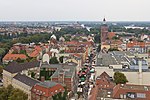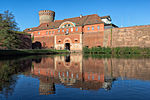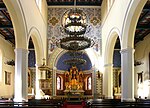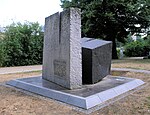Karlslust dance hall fire
1940s in Berlin1947 fires1947 in West GermanyBuilding collapses caused by fireFebruary 1947 events ... and 7 more
Fire disasters involving barricaded escape routesFires in GermanyHuman stampedes in GermanyMan-made disasters in GermanyNightclub firesRestaurant firesSpandau
The Karlslust dance hall fire (also known as Loebel's Restaurant fire) occurred on 8 February 1947 in Hakenfelde, a locality of Spandau in what was then the British sector of Berlin. With its death toll of 80 to 88, it marks possibly the worst fire disaster in Germany since the Second World War. The death toll is today considered to be 81: 80 guests and the owner of the restaurant, Julius Loebel, who died while attempting to save a cashbox.
Excerpt from the Wikipedia article Karlslust dance hall fire (License: CC BY-SA 3.0, Authors).Karlslust dance hall fire
Hakenfelder Straße, Berlin Hakenfelde
Geographical coordinates (GPS) Address Nearby Places Show on map
Geographical coordinates (GPS)
| Latitude | Longitude |
|---|---|
| N 52.567111111111 ° | E 13.197338888889 ° |
Address
Hakenfelder Straße 8
13587 Berlin, Hakenfelde
Germany
Open on Google Maps










